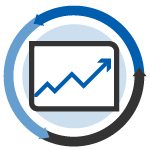 The price of recovered natural HDPE bales has climbed again, in some areas breaking recent records. Continue Reading
The price of recovered natural HDPE bales has climbed again, in some areas breaking recent records. Continue Reading

 The price of recovered natural HDPE bales has climbed again, in some areas breaking recent records. Continue Reading
The price of recovered natural HDPE bales has climbed again, in some areas breaking recent records. Continue Reading
 The price of natural HDPE has skyrocketed over the past month, roughly doubling in some areas to a high of 52 cents per pound. Color HDPE also took a notable jump.
The price of natural HDPE has skyrocketed over the past month, roughly doubling in some areas to a high of 52 cents per pound. Color HDPE also took a notable jump.

The price of PET took a dive over the past month, but the value of natural HDPE climbed substantially. Continue Reading
Historically, companies have used post-consumer resin (PCR) because it was a lower cost feedstock than virgin. In recent years, however, pricing for virgin plastic (mostly “wide spec” resin) has fallen below that of PCR (mostly high quality PCR that is suitable for food contact).
 PET and HDPE bales are fetching lower prices than they were a month ago, but PP and high-grade film have shown stability.
PET and HDPE bales are fetching lower prices than they were a month ago, but PP and high-grade film have shown stability.

Prices for PET and natural HDPE have been relatively flat lately, with more movement seen in color HDPE and PP.
 The past month has brought a softening of prices for one key recovered resin but relative stability for another.
The past month has brought a softening of prices for one key recovered resin but relative stability for another.

The price of natural HDPE seems to have leveled out at a historically low level, falling only 0.6% over the past month.
